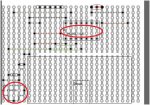pleiser
Senior Member
Hi, I am making a temperature sensor transmitter using axe213 transmitter and ds18b20 temperature sensor (my first project of my own design) and when I turn it on the picaxe faild to program(hardware not detected) then I noticed that the picaxe (and battery) was getting frighteningly hot (did not burn me but got close.) when I tested with a multimeter I got aceptable voltage (3.08 volts) across picaxe +volts and ground pin.
I am powering it with a circut from ron hackett's PICAXE evil genious book
(premade version avalible here http://www.jrhackett.net/BBP-01_Docs.shtml .)does anyone have any ideas?
(I will post pictures soon)
I am powering it with a circut from ron hackett's PICAXE evil genious book
(premade version avalible here http://www.jrhackett.net/BBP-01_Docs.shtml .)does anyone have any ideas?
(I will post pictures soon)

